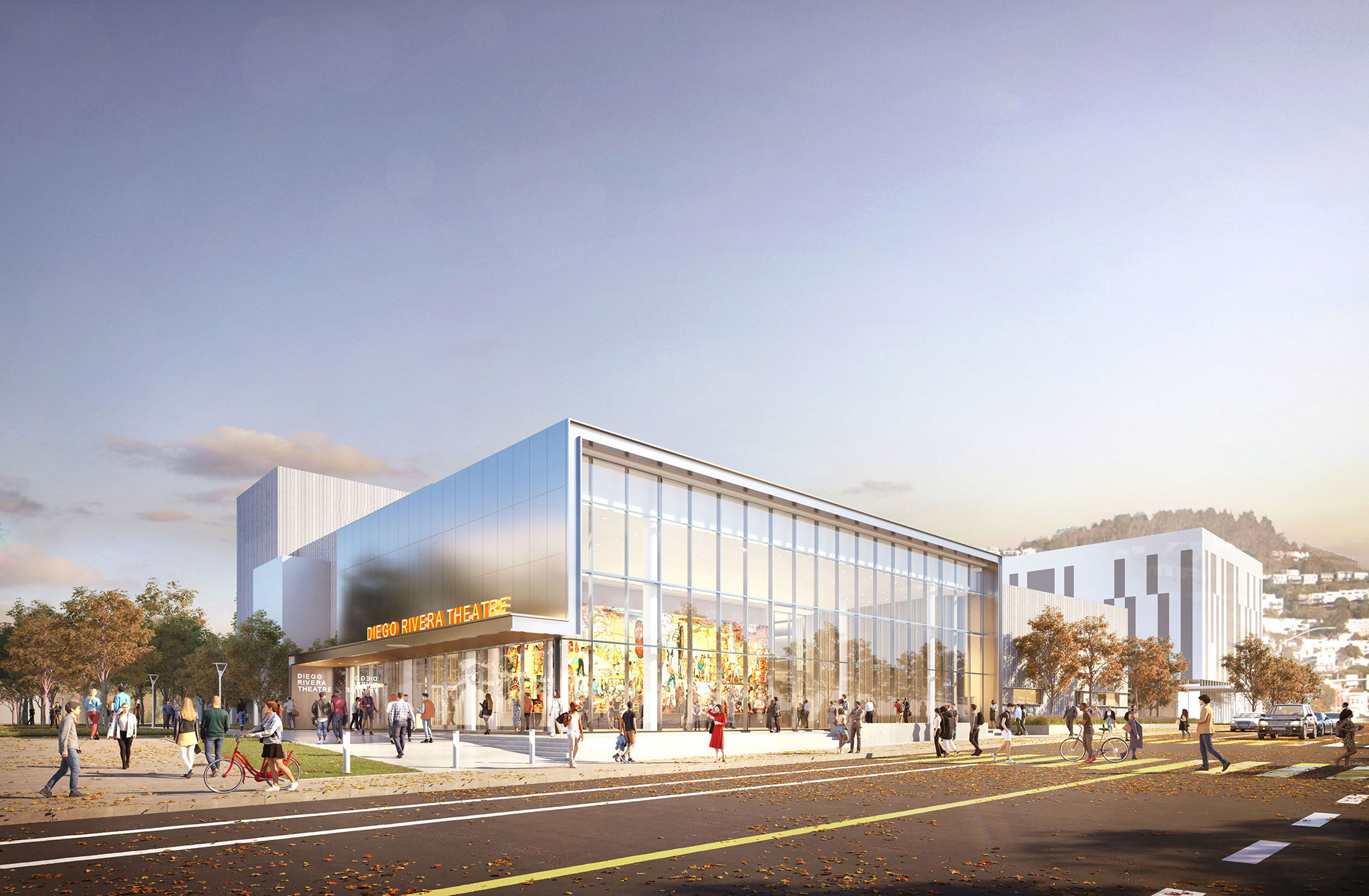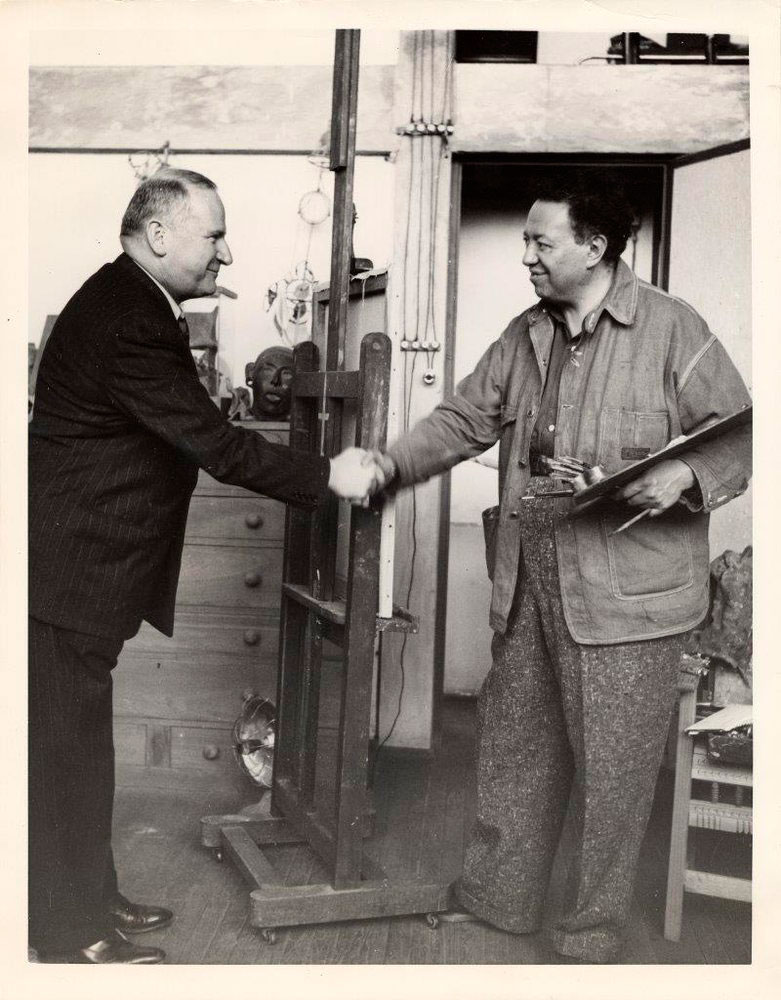
Diego Rivera, The Marriage of the Artistic Expression of the North and of the South on this Continent (Pan American Unity), 1940. © Banco de Mexico Diego Rivera & Frieda Kahlo Museums Trust, Mexico D.F. / Artist Rights Society (ARS), New York. Image: courtesy City College of San Francisco. Courtesy SFMOMA and CCSF.
Diego Rivera's Pan American Unity mural holds immense cultural significance as a vivid representation of the artist's vision for unity across the Americas. Featuring a vibrant tapestry of figures that weave together historical, cultural, and industrial scenes from various regions, the artwork emphasizes the interconnectedness and solidarity between these diverse nations in the Americas. In the years after its creation, the mural faced a series of challenges and at one point, it was considered lost. The mural's journey reflects its enduring power to inspire and bring people together, overcoming various obstacles and ultimately becoming a cherished centerpiece of public art.

New Diego Rivera Theater by LMN and TEF. Courtesy LMN Architects.
Diego Rivera’s inspiring Pan American Unity Mural is the centerpiece of the building, where it will finally reside after its tumultuous 70-year history. Originally painted on Treasure Island for the Golden Gate International Exposition in 1940, the mural has not been widely viewed by the public until being recently displayed at the San Francisco Museum of Modern Art. The Theater’s mural lobby, which will house the artwork, has been designed to display the art to both the building’s users as well as pedestrians outside. The lobby is wrapped in a glass wall, showcasing the mural, and allowing passers-by to be drawn in by the presence of this historical work of art. The Diego Rivera Theater is an open and welcoming building that integrates into the existing circulation patterns of the campus and facilitates a pathway between the adjacent STEAM and MUB Buildings.
The building’s program includes three concrete blocks of varying sizes, each containing a separate performance venue. The venues include a 600-seat performance hall, 150-seat studio theater, and 100-seat recital hall—all optimized for different performance experiences. The building will also contain plentiful instructional spaces, practice rooms, and administrative offices.

Diego Rivera shaking hands with Timothy Pflueger, 1940. Courtesy San Francisco History Center, San Francisco Public Library.
Designed to be a centerpiece on the CCSF campus, the Diego Rivera Theater will support its educational mission while also being a destination for visitors to San Francisco and an anchor of the local arts community.





























